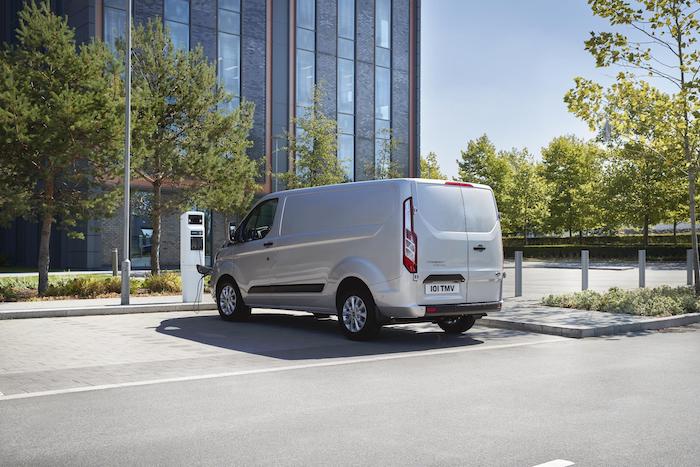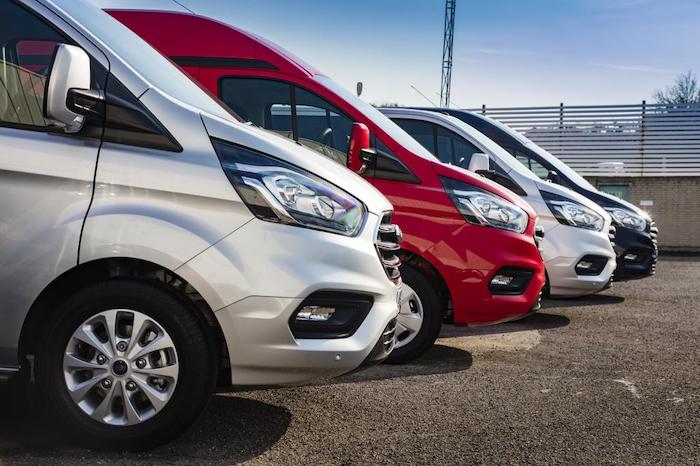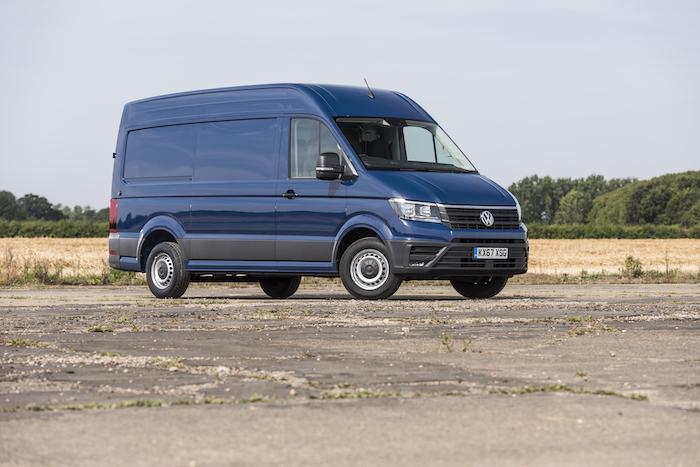You might have heard or seen the term ‘commercial’ when looking at second-hand vehicles or trying to tax a machine for use on the road. But what, precisely, is a commercial vehicle? Here’s our guide to make everything clear…
What is a commercial vehicle?
Very simply, it is one designed solely for commercial use. That means by industries and businesses, so – extrapolating from that – you’re talking about vehicles primarily designed to carry cargo, objects and work tools, rather than people (as with cars, MPVs, SUVs and so on). Vans, essentially, although this is a very catch-all term, which can mean anything from a Ford Fiesta Van or Opel Combo, right up to a 7.5-tonne rigid-frame box-back lorry. In fact, Ford is a good company to use for sizes of commercial vehicle, as it has nearly the full range of machines available (it used to even do trucks, under a partnership with Italian firm Iveco, but that has long since come to an end).

So, the aforementioned Fiesta Van is just that – a Fiesta, with the rear seats removed, the rear side windows blanked out and then the whole back of the car turned into an area to chuck large and bulky items. Moving up, you have the Transit Courier, which is more obviously van-shaped (it has a longer, flat roof and then a vertical rear end, complete with twin, side-hinged doors instead of a top-hinged boot hatch like a car), and another level again is the Transit Connect, a larger version of the Courier and one that can have sliding side doors on it.
What we typically consider to be the ‘average’-sized van, the one that used to be associated with ‘white van man’, is represented by the Transit Custom. It comes in two wheelbase sizes and is around five to 5.3 metres long, making it a big vehicle on the roads. The Transit Custom comes with a standard cab with three seats in it, or as a Double Cab-in-Van, which allows for carrying more crew/workpeople, at the expense of load space. The biggest van Ford now does is just called the Transit, which has a high roof and a vast cargo area, and again has various configurations of cab space/load area. The Transit Chassis Cab is basically a skeletal van, with just the passenger compartment, ladder frame, engine and wheels fitted, allowing for commercial businesses to fit whatever sort of load compartment (tipper truck, flatbed etc) they like on the back of it.

Of course, there are other commercial vehicle manufacturers besides Ford – such as Volkswagen, Mercedes-Benz, Opel, Renault, Toyota, Peugeot, Citroen and more – who have analogues of all these scales of van in their own ranges. Where it becomes a mite confusing is that, beyond vans, there are two more types of readily available commercial vehicles: pick-up trucks; and commercial adaptations of passenger vehicles.
The former of these has grown in popularity enormously over the years, mainly because you can get plush, civilian versions that are seen as a cool alternative to an SUV. These can have single cabs (two seats in them), King-Cab (two full-sized front seats and occasional rear seats for temporary use only, off the public highways and on building sites etc) or Double-Cab (five full-sized seats and four full-sized doors, too) arrangements, but essentially they’re a 4x4-type of vehicle (so like a Land Rover or SUV) with a passenger compartment/engine bay at the front, less of an upright windscreen than vans and a flat load bay out the back. Many of these can take more than 1,000kg of material in said load-bed, which leads to the name one-tonne pick-up trucks, but they don’t weigh one tonne themselves; they’re normally approaching 2.5 tonnes in weight. Lower-spec models aimed squarely at commercial use will have steel wheels, black plastic bumpers and white paint, but high-trim models have alloys, leather interiors, lots of comfort and driver assist systems and fancy metallic paints. This is where the confusion comes in, as these are seen more as civilian vehicles (i.e. to carry people), but which can still be registered as commercials.

Finally, there are the commercial conversions. For a while, the N1 loophole in our tax laws meant all sorts of passenger vehicles (typically, big, premium SUVs like the Land Rover Discovery and Volkswagen Touareg, but even some cars like the Ford Focus fell into this category) could be registered as commercials, providing they have a large load bay area in the back (meaning most commercial SUVs on the used market are two- or five-seat vehicles, not seven-seaters where applicable). However, this loophole was closed in July 2018, so their popularity is on the wane.
What benefits are there to a commercial vehicle?
Well, not only are they practical workhorses that can take a lot of abuse – you’d much rather sling bags of cement in the back of a one-tonne pick-up truck, for example, than you would in the boot of your pristine Range Rover Autobiography – but they’re also versatile. The pick-up trucks, for instance, can be used as family transport one day and then something to remove a load of junk the next, while some of the larger vans have minibus applications that result in them turning into eight or nine-seat MPVs, or even more.
However, their biggest break here in Ireland is for tax. Commercial vehicles up to three tonnes gross weight are registered at a flat rate of €333 per annum, regardless of their emissions (there are rates of €420, €500 and €900 per annum for larger commercial vehicles by gross weight). Some of the grander ones would cost up to €1,200 or maybe even €2,350 if registered as personal transportation, so there’s a workaround here that makes them highly attractive on a taxation front. However, this leads us onto…
What are the drawbacks?
They’re typically primitive to drive compared to passenger vehicles. Some people like this, but others do not. Bear in mind these machines have tough suspension, designed to take heavy payloads and driving on rougher (possibly unmade) road surfaces. They are not designed to cruise comfortably and quietly up and down motorways, first and foremost. They’re also big, for obvious reasons, which makes manoeuvring them in towns and built-up areas trickier than other vehicles.
Yet it’s that tax dodge which will land you in the biggest trouble. If you buy a Double-Cab one-tonne pick-up, like a posh Nissan Navara or Ford Ranger, register it as a commercial vehicle and then use it like an SUV, ferrying your kids to school or going off for weekend jaunts, and the law catches up with you, you’re likely to land a €4,000 fine, points on your licence and even a court summons. It’s a form of tax evasion, see? So, if you’re going to buy a Transit minibus or a Mercedes X-Class, and you’re intending to use them for family life, don’t risk it – register it as a civilian vehicle, and not a commercial.